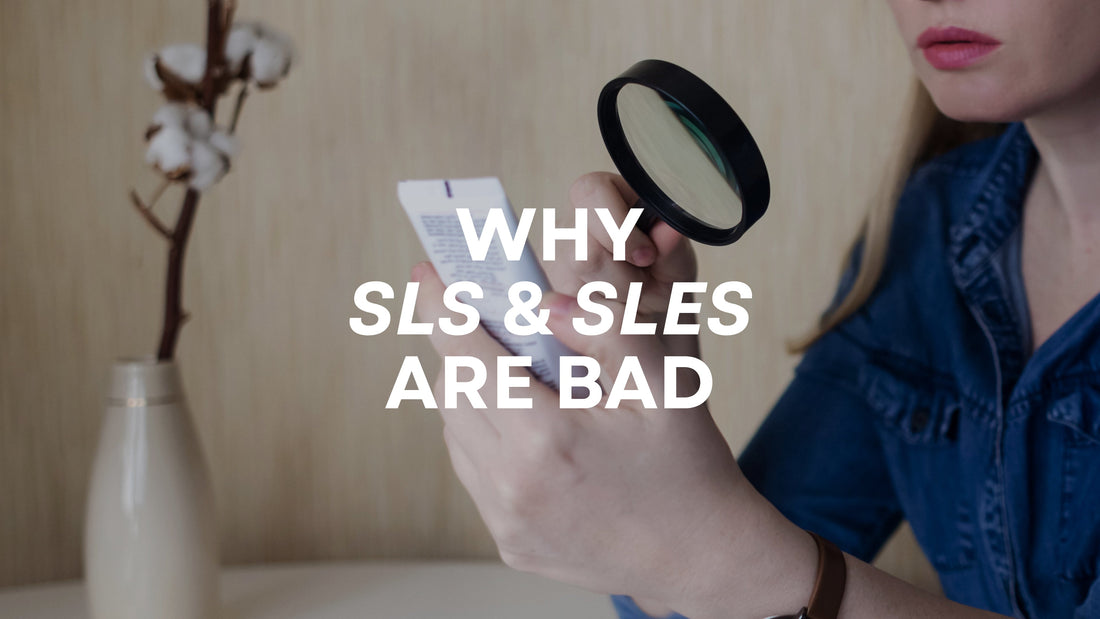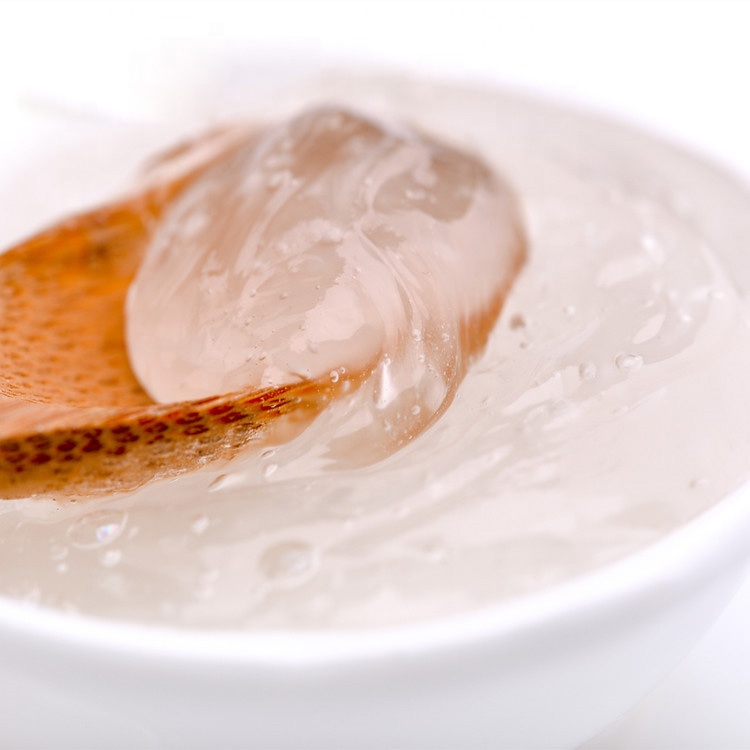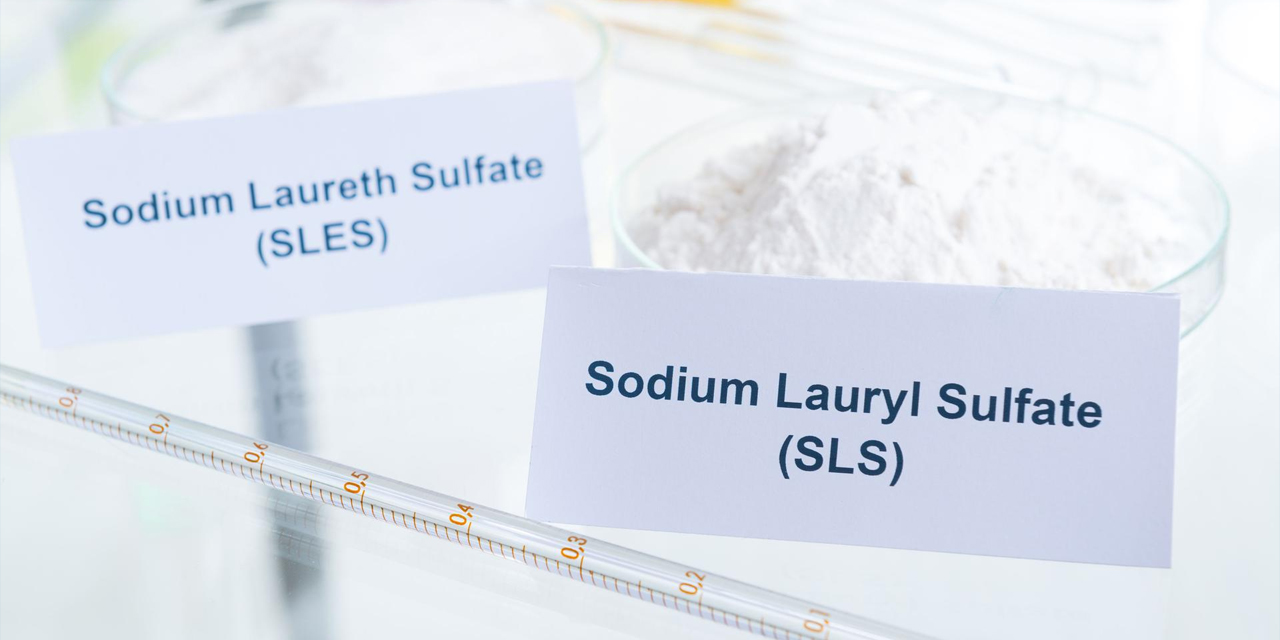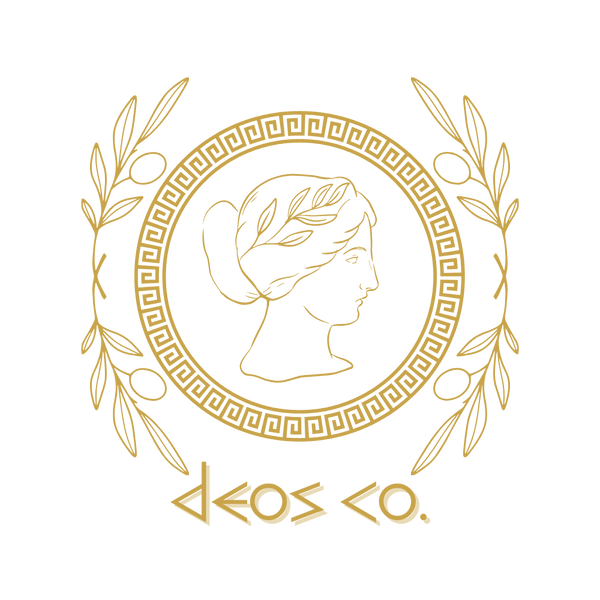
SLS and SLES in Soap: What You Need to Know
Konstantina SotiroglouSLS and SSLES in Soap: What You Need to Know
Sodium Lauryl Sulfate (SLS) and Sodium Laureth Sulfate (SLES) are two of the most widely used synthetic surfactants in personal care products. Their popularity began in the mid-20th century, particularly in the 1940s and 1950s, as effective, low-cost cleansers with foaming power that replaced traditional soaps in mass-market formulations.
What Are SLS and SLES?
SLS is a detergent and surfactant typically derived from coconut or palm kernel oil, though it is heavily processed. SLES is a milder version of SLS that has undergone ethoxylation to reduce irritation. Both are used in shampoos, soaps, toothpaste, and household cleaners to break surface tension and produce rich lather.

Scientific Concerns
Numerous studies have shown that SLS and SLES can irritate the skin, eyes, and mucous membranes, especially with prolonged exposure. SLS is known to strip away natural oils from the skin, damaging the skin barrier. SLES, while milder, can be contaminated with 1,4-dioxane during manufacturing—a compound classified as a probable human carcinogen by the U.S. Environmental Protection Agency.
Studies show that SLS increases transepidermal water loss (TEWL), leading to dryness, irritation, and skin barrier disruption. Even at low concentrations (0.5–1%), SLS was shown to induce irritation in sensitive individuals.
Endocrine Disruption Potential
Although SLS and SLES are not officially classified as endocrine disruptors, some animal studies suggest that long-term dermal absorption may influence hormonal balance, likely by disrupting the skin's microbiome or causing chronic inflammation. More research is needed in humans to confirm these effects.

European Regulations
According to EU Regulation (EC) No 1223/2009, both SLS and SLES are allowed in cosmetic products but must be used with caution. SLES must be purified to remove 1,4-dioxane and comply with strict limits. SLS must be labeled appropriately due to its irritation potential.
Historical Use
SLS was first used in commercial soap production during World War II when natural fats were scarce. It allowed companies to mass-produce foaming products cheaply and efficiently, giving rise to the modern synthetic soap era.
Modern Alternatives
A growing number of consumers and formulators are moving toward gentle, sustainable alternatives such as:
1. Cocamidopropyl Betaine
2. Decyl Glucoside
3. Sodium Cocoyl Isethionate
4. Rhamnolipids
5. Alkyl Polyglucosides
6. Sucrose Esters
These plant-based or biodegradable surfactants offer lower irritation potential and a better environmental profile.
Conclusion: Why Clean Ingredients Matter
Our skin is our first barrier against the world—and everything we apply to it matters. Synthetic surfactants like SLS and SLES, while effective, often come with side effects that no longer align with the values of conscious consumers. That’s why more people are choosing products made with clean, botanical ingredients.
At Deos Co., we believe in skincare that heals rather than harms. Our soaps are:
| ✅ 100% natural & organic |
| ✅ Free of SLS, SLES, parabens, synthetic dyes, and artificial fragrances |
| ✅ Crafted with Greek botanical wisdom using ingredients like olive oil, lavender, aloe, alkanet, basil, and goat milk |
Every bar is a return to purity. A ritual of care. An aesthetic moment. A truth told by plants.
Experience Hellenic Harmony, Athena’s Essence, or Thera Serenity—each one a myth you can touch.
🌿 Explore our (SLS) sulfate-free collection here.
 'Thera Serenity – The Lavender & Basil Harmony Ritual Soap'
'Thera Serenity – The Lavender & Basil Harmony Ritual Soap'
 'Elysian Glow Soap – Brightening Spirulina Bar with Avocado & Botanical Butters'
'Elysian Glow Soap – Brightening Spirulina Bar with Avocado & Botanical Butters' 'Olympus Brew – The Coffee & Shea Butter Vitality Ritual'
'Olympus Brew – The Coffee & Shea Butter Vitality Ritual'
Global Regulatory Status
In the United States, the Food and Drug Administration (FDA) does not currently ban the use of SLS or SLES in cosmetics, but manufacturers are responsible for ensuring the safety of their products. The FDA encourages proper labeling when these ingredients are used, especially in rinse-off products. More information can be found here:
In Canada, SLS and SLES are also allowed for use in cosmetics. However, the Canadian government requires all products containing these ingredients to be labeled accurately. Health Canada recognizes the potential for skin and eye irritation and includes both ingredients in its Cosmetic Ingredient Hotlist for monitoring purposes.
South Korea has stricter cosmetic guidelines and requires rigorous safety assessments. SLS is permitted in rinse-off products only, with regulated concentration limits. Products for children or long-term application must meet lower thresholds or avoid these surfactants altogether.
Scientific References
1. Ananthapadmanabhan, K. P., et al. (2015). 'Irritation potential of surfactants: Structure-activity relationships.' Journal of Dermatology.
2. Korting, H.C., et al. (1990). 'Effects of surfactants on the skin barrier.' Contact Dermatitis.
3. Zhai, H., & Maibach, H. I. (2001). 'Effects of detergents on skin function.' Clinics in Dermatology.
4. Rosen, M. J., & Kunjappu, J. T. (2012). 'Surfactants and interfacial phenomena.' Wiley-Interscience.
5. Cameotra, S. S., & Makkar, R. S. (2004). 'Biosurfactant-enhanced bioremediation of hydrophobic pollutants.' Pure and Applied Chemistry.
6. Vecino, X., et al. (2022). 'Biosurfactants in cosmetic formulations: Trends and challenges.' PMC Journal.
7. Gaur, R., et al. (2023). 'Surfactin: A powerful biosurfactant for cosmetic applications.' Wiley Journal.
8. Perinelli, D. R., et al. (2025). 'Sucrose ester surfactants in natural product formulations.' Academic Review.
9. Jiménez, A. E., et al. (2025). 'Rhamnolipids and alkyl polyglucosides: Eco-friendly alternatives to SLS in skincare.' Academia.
10. U.S. Environmental Protection Agency (2023). '1,4-Dioxane Risk Evaluation.' EPA.gov.
11. Self Magazine (2021). 'What SLS does to your skin, according to dermatologists.'
12. Teen Vogue (2022). 'Sulfate-free shampoo: What it really means for your skin and hair.'
13. Byrdie (2022). 'Is SLS bad for you? The expert take on sulfates in cosmetics.'
Media References
-
EU: Permits use with strict concentration limits and clear labeling (Annex III): https://eur-lex.europa.eu/legal-content/EN/TXT/?uri=CELEX%3A02009R1223-20221217
- 🇨🇦 Health Canada: Includes SLES in its monitored Hotlist: https://www.canada.ca/en/health-canada/services/consumer-product-safety/cosmetics/cosmetic-ingredient-hotlist.htm
- The Strategist – NY Mag: https://nymag.com/strategist/article/what-are-sulfates.html
- Fed Up with Food: https://www.fedup.com.au/factsheets/chemical-factsheets/sulphites-or-sulphates-sls-or-sles
- Groomer to Groomer: https://www.groomertogroomer.com/articles/the-rise-fall-and-reincarnation-of-soap.html


1 comment
Wow, this was super helpful! I’ve always been confused about SLS and SLES and didn’t know the difference. The part about skin irritation and how they can sometimes be contaminated really opened my eyes.
I love that you also mentioned natural alternatives—I’ve been trying to switch to gentler products and this gives me more confidence in my choices.
Thanks for sharing this in such an easy-to-understand way!